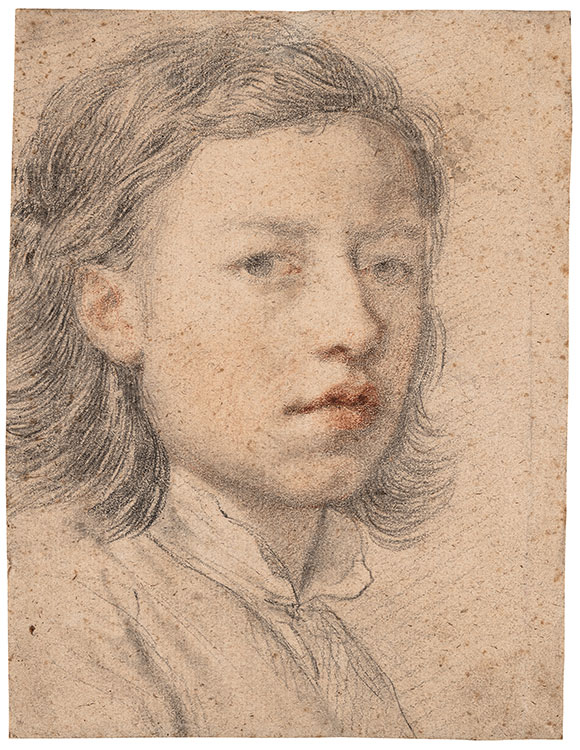
Considered one of the pioneers and most important representatives of Neoclassicism, Anton Raphael Mengs began his training as a child under his father, the Saxon court painter Ismael Mengs. Anton Raphael graduated from this early, intensive tutelage around 1740, when he was twelve years old—the same year that Ismael and his children began a fouryear stay in Italy to continue their artistic education. This remarkable self-portrait, the earliest to survive by Anton Raphael, was drawn in that year, before the family’s move. A testament to the artist’s precocious talent, the drawing sensitively blends the black and red chalk to create a lifelike record of the young Mengs’s features as studied in a mirror.
Anton Raphael Mengs
German, 1728–1779
Self-Portrait at Twelve Years Old, 1740
Black and red chalk
Kupferstich-Kabinett, Staatliche Kunstsammlungen Dresden, INV. NO. C 2464
© Kupferstich-Kabinett, Staatliche Kunstsammlungen Dresden
Jennifer Tonkovich, Eugene and Clare Thaw Curator of Drawings and Prints
What did it mean in 1740 to be a twelve year old draftsman capable of wielding colored chalks to capture your own likeness? This self-portrait is an unusually accomplished piece of juvenilia, and rarely do we have datable works for this early stage of an artist’s career. The German tradition, however, is curiously strong in such works: among the most memorable being a striking self-portrait executed in 1484 by a 13 year old Albrecht Durer. At the time Mengs executed this sheet, he was under his father’s tutelage and transitioning from making copies to drawing from life. We see one of his first forays into drawing aided with a mirror, as he uses himself as the model. An old slip of paper once attached to the back of the drawing notes that Mengs gave the sheet to a classmate before the artist and his family departed for Italy. This practice of giving and exchanging drawings would flourish among young German artists in the nineteenth century.
